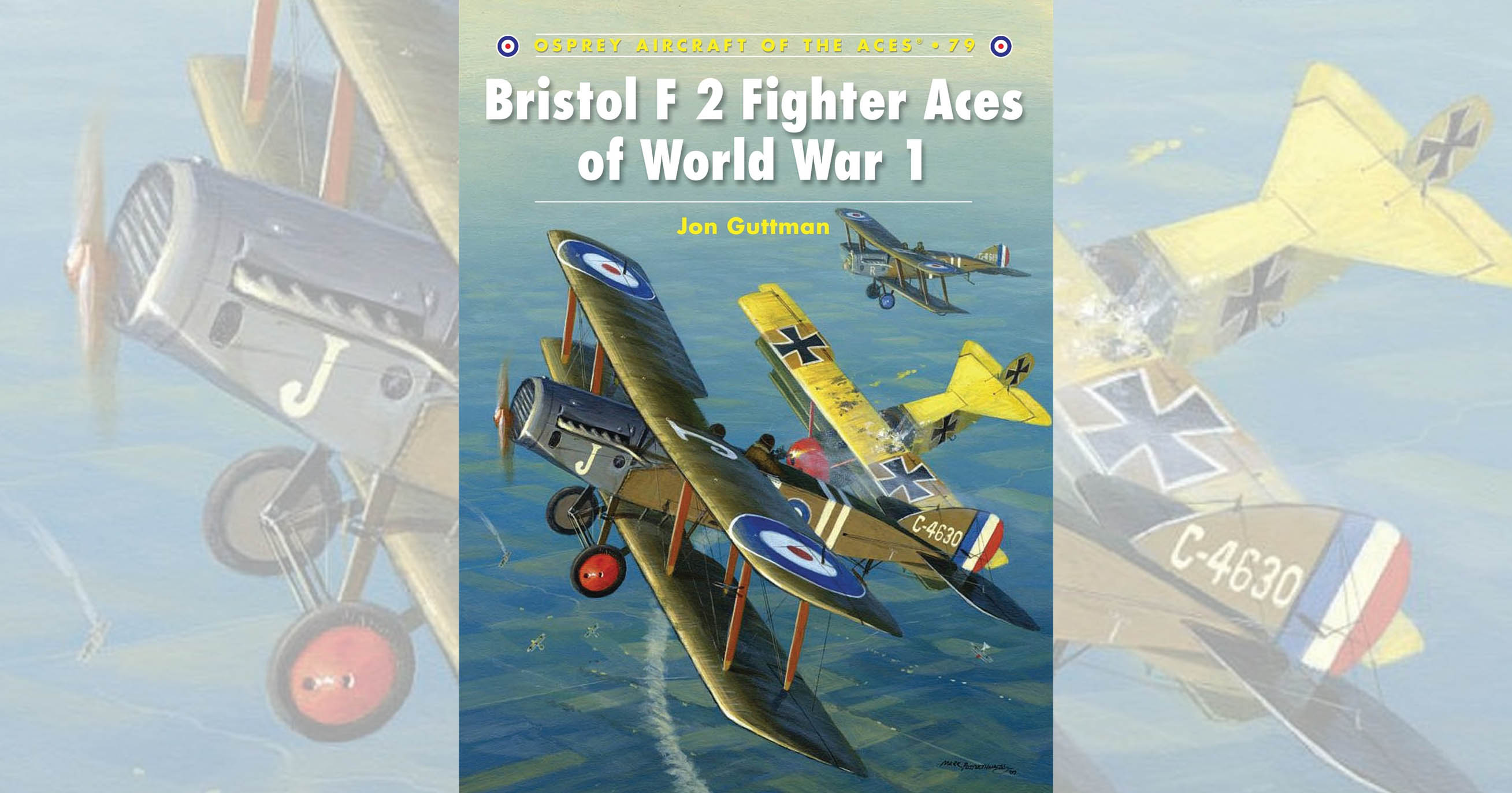Bristol F.2 Fighter Aces of World War 1 by Jon Guttman, Osprey Publishing, Oxford, England, $20.95.
Jon Guttman’s latest offering is a long-awaited title, since the Bristol F.2B is easily the most popular World War I two-seater among buffs and historians. As with all Osprey titles, the Bristol entry contains a wealth of illustrations: 105 photos plus 42 color profiles and excellent line drawings.
Like the S.E.5, the “Brisfit” (a nickname popular with the general public but detested by its aircrews) was a 1916 design that had unusual longevity: Both entered combat in April 1917 and remained competitive more than 19 months later. In fact, the Bristol F.2B remained in squadron service into the early 1930s. The big Bristol got off to a poor start, however. The F.2A’s debut on April 5, 1917, resulted in a debacle wherein Manfred von Richthofen’s Jasta 11 tore apart a formation of No. 48 Squadron led by Victoria Cross recipient Captain William Leefe Robinson. The Zeppelin killer proved no match in fighter combat, himself becoming a POW while four of his six planes were downed that day.
Despite its inglorious start, the Bristol quickly proved its worth, flying with at least a dozen squadrons in Europe and the Middle East plus air defense units “at home.” Along the way the type produced 121 ace pilots and 126 observer aces, the best known being Canadian Andrew E. McKeever (31 victories) and Londoner Charles G. Gass, the war’s leading gunner with 39 kills. Guttman describes the careers of some intriguing fliers, including American brothers Paul and Thayer Iaccaci plus Wilfred Beaver, an Englishman often misidentified as a Yank in the RAF when in fact he gained U.S. citizenship much later.
The most intriguing chapter is the last, illuminating the tremendous records of No. 111 Squadron, Royal Flying Corps, and the unit to which it passed on its Bristols, No. 1 Squadron, Australian Flying Corps. Those units proved a force multiplier in Palestine, effective far beyond their surprising number of aerial victories. Exploiting the F.2B’s range and speed, they excelled at deep reconnaissance and intelligence gathering, and contributed heavily to the annihilation of the Turkish Seventh and Eighth armies in the Third Battle of Megiddo.
After finishing Bristol Fighter Aces, any red-blooded reader will want to man his Brisfit and go strafe the Bray-Corbie Road.
Originally published in the March 2008 issue of Aviation History. To subscribe, click here.





